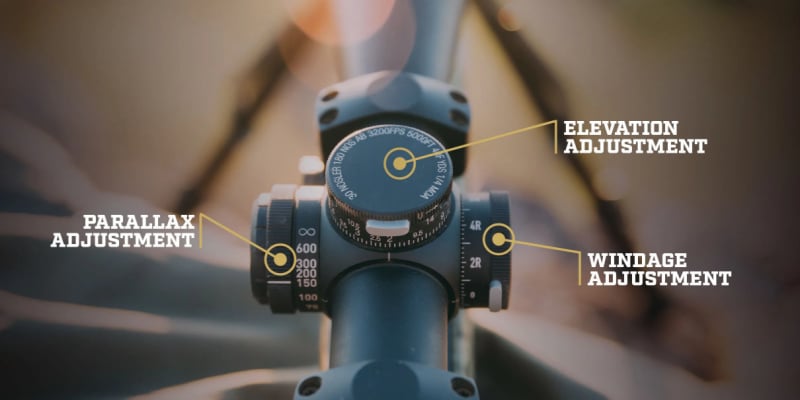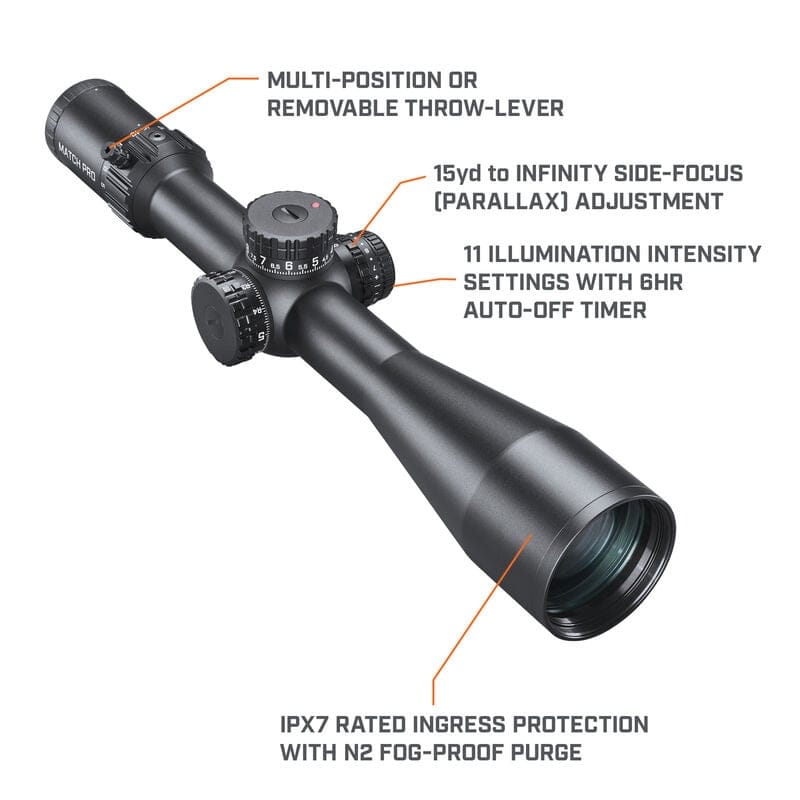If you use optics on your rifles, you’ve probably heard some terminology related to their use and wondered what it means or if it matters. One such term is “parallax,” a word that’s used in relation to rifle scopes rather frequently. Some scopes are advertised as parallax-free, but an increasing number of optics today come with a parallax adjustment turret. So, what exactly is parallax, and how does it work for—or against—you? We’re going to answer that question and help you get a bit more comfortable making the necessary adjustments on your rifle scope for greater accuracy on target.

What is Parallax?
In rifle optics, parallax is the term used to describe the shift of the reticle position in relation to the target as the shooter changes position. This happens because the reticle and target aren’t on the same focal plane. Issues related to parallax are more common with long-range shooting, which isn’t to say there’s never a parallax problem at closer distances, only that it’s less likely. Due to its prevalence at greater distances, parallax adjustment knobs and rings are more common on scopes made for long-range than on LPVO or mid-range optics.
Why Does Parallax Matter?
Parallax matters because if you ignore it, your point of aim versus point of impact is going to vary. That means taking a hit for accuracy on target, and nobody wants that. Learning to adjust parallax is surprisingly simple on most optics and is well worth the effort. After all, who doesn’t want to nail every shot?

How Do You Know If Parallax Is Off?
When the parallax is off on your rifle scope, it’s going to look like the reticle moves as you shift positions behind the scope. It’s a somewhat common misconception to believe that simply bringing greater clarity to the reticle fixes this issue (spoiler alert: it doesn’t). We’re not going to get into issues related to what happens if your optic doesn’t have a parallax adjustment, we’re just going to talk about how to use existing adjustment options to fix it.
How Do You Adjust Parallax?
The first thing you need to figure out when it’s time to adjust parallax is where the knob is. Your optic might have a dedicated parallax adjustment knob, which is what we’re going to address here. Please note that these steps are based on the assumption that your rifle scope is zeroed, you have a target ready and waiting, and you’ve already set your magnification.
It’s really fairly straightforward. Simply turn that parallax dial all the way up, and get back on the rifle. Turn the parallax knob until the reticle becomes a nice, clean line (this is why some shooters think they only have to make the reticle clear, but just bringing clarity to the reticle isn’t the same as adjusting parallax). Now you should be able to move your head without the reticle shifting around like it’s floating. If you shift your head and the reticle is still moving, adjust the parallax turret a bit more. Once you find a spot where the reticle is both clear and unmoving, make note of it as it relates to the distance. If your turrets lock into place, go ahead and lock parallax. If they don’t, note the setting for the distance for future reference.
Yes, it’s possible to fine-tune parallax without fully rotating the knob, but you might find the process faster if you just turn it to infinity and start from there. With time and practice, you’ll get used to the scope and the distance and be better able to make minor adjustments on the fly.
Setting parallax is just like any setting on your scope. You shouldn’t need to adjust it if you continue shooting at that distance, but when your yardage changes, the settings change. Likewise, if you fly the rifle somewhere, drop it, or knock it against a tree, you might find you’ve lost your settings. This is why it’s so nice to have locking turrets. But again, if your scope’s turrets don’t lock, keep track of your settings. Just don’t forget to list the distance you were shooting at the time.

What Does Parallax-Free Mean?
Some scopes are marketed as parallax-free, which generally applies to certain distances. Typically, those distances are between 50 and 150 yards. These parallax-free optics are made with features designed to either mitigate or totally get rid of parallax-related errors at intermediate ranges. The purpose of these scopes is to make it easier for the shooter to stay on target and maintain accuracy regardless of how they might move their heads.
As you might have guessed, parallax is still going to become an issue beyond 150 yards with distances past 250 yards presenting the biggest challenges. So, is there really such a thing as parallax-free? Yes, but only within a certain range.

You’re generally going to need that parallax adjustment feature if you spent a lot of time shooting beyond 250 yards. Of course, if you’re looking for precision shots while hunting and intend to go over 150 yards, it doesn’t hurt to make sure you’re using a scope with a parallax adjustment knob. Conversely, if you only shoot at closer distances, you’re not terribly likely to find yourself needing to adjust parallax. It’s nice to have it available, though.
Does Parallax Affect Accuracy?
Yes. Parallax affects accuracy because you’re going to struggle to make precise shots or to impact the target at all—especially when shooting at significant distances—if the parallax is off. This doesn’t mean it’s impossible to hit a steel target at long ranges without a parallax adjustment knob—I’ve certainly done it—it just means it’s far more challenging and difficult to do consistently. Basically, if you want a repeatable process of hitting the target at long range, you want a parallax adjustment knob.
Final Thoughts
Most major manufacturers design and produce rifle scopes with parallax adjustment knobs or turrets. This includes companies like Leupold, Swarovski, Bushnell, Zeiss, Vortex, and Schmidt & Bender, among others. It’s important to remember that you’re looking for more than just the existence of a parallax adjustment knob. Glass clarity, eye relief, field of view, first or second focal plane—there are numerous features to take into consideration when selecting a rifle scope. Just include getting one with a parallax adjustment knob as a necessary feature while you’re shopping for glass.


